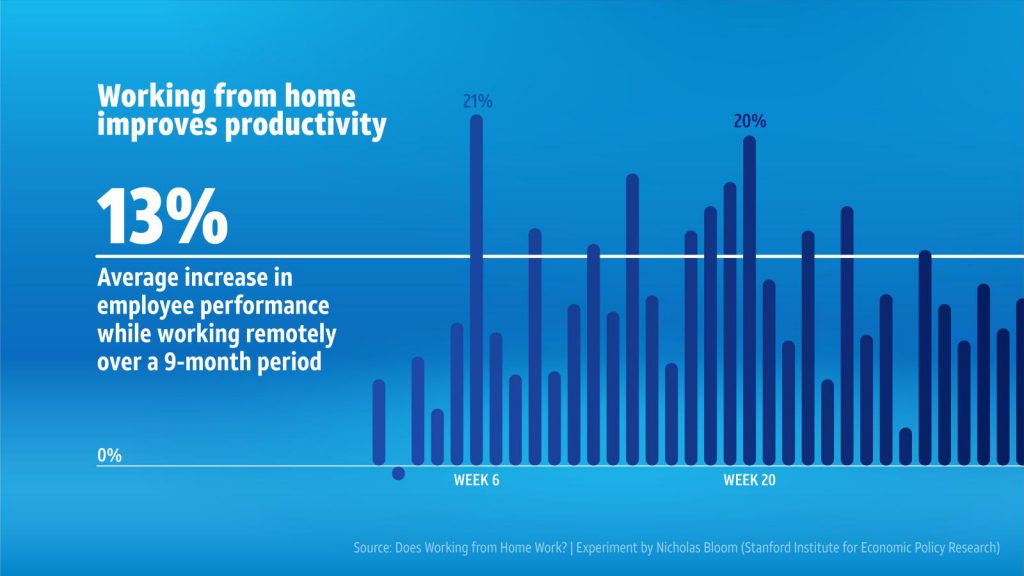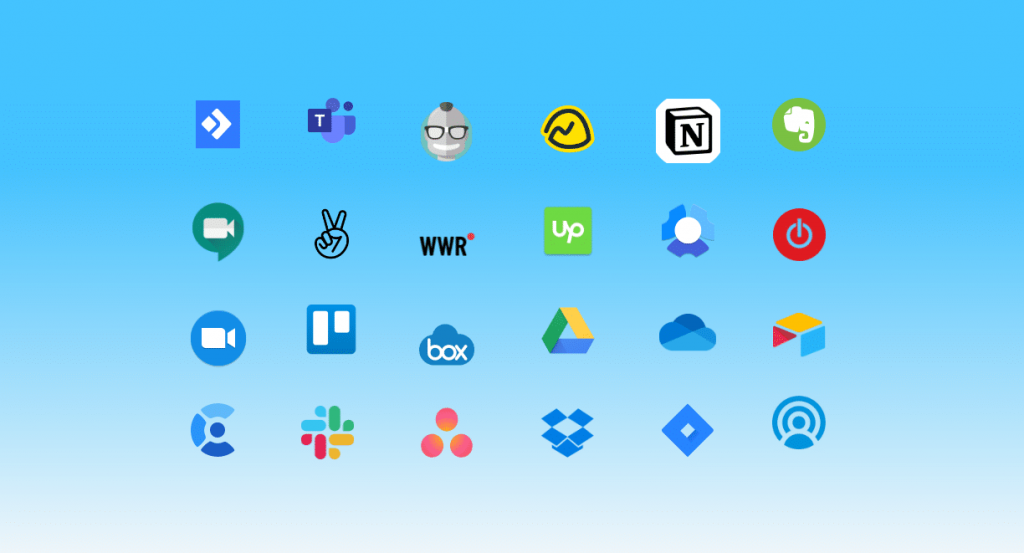Busting the myths about remote work is the need of the hour.
With the current crisis has triggered the largest work from the home experiment, a large portion of the global workforce has taken to working remotely. Naturally, people who have never done this before having several apprehensions about it.
What are the myths that surround the remote working set-up and what is the reality? Let’s try to explore them in this article.
Myth #1: Remote work is only for start-ups or small companies
It’s a common misconception that large organizations can’t implement remote work effectively. Larger organization means bigger groups and wider collaborations. Hence remote is considered to be feasible only for startups.
Reality: Many large companies have successfully implemented remote work
When companies succeed in nurturing the right environment that supports remote work, it is definitely possible for large companies to be remote. The success of remote work doesn’t depend much on the number of employees as much as it does on building the right culture in the organization. Admittedly, startups have an easier time at it because they are nimble enough to adapt and have a lot of space to build a great culture.

Companies like Gitlab, Buffer, Zapier are some examples of large companies that are successful and remote first. Github, with more than 1000 employees, has created a successful ecosystem for remote working. More than 60% of their employees work remotely.
Myth #2: Remote work is not productive
It’s a common misconception that the atmosphere at the home office is not conducive to effective work. It has its own share of distractions that could cost productivity but believing “Netflix is all that remote employees do” sounds like a myth that needs busting.
Reality: Studies show remote workers are more productive
Let’s face it, the office did not have any fewer distractions either. Between hours wasted on an avoidable commute, needless meetings, and incessant conversations with everyone around, we struggle to get any real work done.

Bloomberg’s recent study shows that people are more creative while working from home. Teams who work from home have highly streamlined products and ensure that they don’t waste time on unnecessary meetings and emails. An experiment conducted on 16000 people showed that employees who worked from home showed a 13% increase in productivity.
Myth #3: Communication is the biggest challenge in remote work
Ease of communication is something that many office workers take for granted. For remote workers, time zones and distance make communication much more difficult. Organizations often shy away from remote work as they believe that virtual discussions and meetings cannot be fruitful.
Reality: With the systems, training, and tools, remote communication can be just as effective
Face to face communication works even in case you cannot meet in-person.
Remote work often helps workers focus as well as communicate better. Location and time zone differences can be overcome when the team is trained for clear and concise communication. With the increase in popularity of remote teams as well as technology, virtual communication systems have also improved significantly.

Between video conferencing, chat tools, and project management systems, teams can now converse as together, communicate asynchronously as well as collaborate efficiently with anyone. Find your pick of top remote tools here. Building workplace relations and culture is just as possible. Many remote-first companies have built a great culture, meaningful relations, and a strong bond and support system with their teams.
Myth #4: Distributed teams are a threat to data security
It’s a common misconception that data leaks could happen as most of the team works from remote locations. Data security is crucial for any organization. It’s a valid concern that remote employees may not be as careful with the security protocols.
Reality: Global remote organizations like GitHub have already achieved data security
The fact is most of the organizational data security measures revolve around the whole company working under the same roof. Even though technology has made it possible, companies haven’t adapted to it because they saw no need to. With the recent COVID-19 lockdown and the work from the home experiment, however, companies are working towards mitigating these concerns.
A lot of companies have already done that too. GitHub, with employees across 65 companies, faced a challenge as data security laws differ in different countries. They have trained their employees to detect and prevent data leak and hacker attacks. Their senior security researcher Mark Loveless explains that data security for a remote company is always ‘work in progress.’ However, that’s no reason to shun distributed teams.
Myth #5: Remote work is only for unsociable introverts
“Sitting on the living room couch with pajamas still on, with coffee mugs and take out cartons strewn all around,” is a typical picture that comes to most people’s minds when they talk about remote work. They’re afraid that remote work will detach them from the organization and make them silos.
Reality: Most of us are ambiverts, none of us loves distractions
Working remotely doesn’t mean that you won’t have any human contact. Most of the remote workers are well disciplined who manage their working and non-working hours well. Many have fully-equipped home offices that boost their productivity.

Introvert or extrovert, a remote job gives a lot more flexibility so you can customize your work structure to suit your personality. And face it, there are countless distractions to work when you’re in the office, we could all use some quiet uninterrupted time to get some real work done.
Myth #6: Remote companies don’t have an organizational culture
It’s a widespread belief that companies with distributed remote teams lack culture. “With a no-office set up, there is no need for a culture that binds the employees together,” this is, however, a common misconception.
Reality: Remote companies have a different and even better culture
Remote-first companies have a robust culture. It stems from the fundamental fact that all the employees are remote and so the inclusion and engagement is integral to the culture and hence is not skewed or forced.
This is rightly said because the culture is everything for a company, remote or non-remote. Culture is about how the team works together as a cohesive unit. Hence, the way your company performs has a direct correlation to culture. In fact, driving a positive culture significantly increases the chance of success of the company. Here’s how remote companies can build a great culture.
Myth #7: Remote employees work 24/7, there is no work-life balance
When you are working from home, work could easily spill into your personal life. When there is no clear boundary between when the work hours and personal time, we end up chained to our work 24/7.
Reality: Remote organizations encourage employees to maintain work-life balance
Without the imposed structure of a traditional workplace, we need to set new expectations of work-life balance, productivity, communication, and success. Creating clear temporal boundaries often depends on the ability to coordinate ones’ time with others. This calls for leaders to aid employees in structuring, coordinating, and managing the pace of work.
Encourage your team to keep regular work hours and be observant of the signs of burnout – a drop in output quality, erratic or moody behavior, and emails being sent at odd hours. Global remote companies like Zapier encourage their employees to have a work routine and stick to it and often discourage them from sending or replying to email after working hours.
Myth #8: Decision making is slow in distributed teams
Discussions, debates, and agreements within four walls cannot be replicated in a remote set up. It’s tougher to convince the team through virtual meetings. These are a few ideas that float around the decision-making process in a remote-first organization.
Reality: Remote companies are equipped with fast decision-making tools
Decisions, big or small, have a profound effect on the team and the work process. This calls for not just careful consideration during decision making, but some set system to ensure measuring and improving the decisions and outcomes as well. Companies cite communication gaps, lack of visibility, mismatch of expectations, and information gaps to be the biggest hurdles to decision making in the remote.
When communication and visibility are fixed, one would realize that decision making need not be affected by working remotely. Asynchronous communication, decision polls, and one-on-ones are some ways you can address the potential challenges.
Remote-first companies like Doist, make use of their tools like Twist to fasten their decision making. Tools not only facilitate the teams to collaborate and come up with fast decisions, but they also increase transparency and record the decision-making process too.
Conclusion
Remote is no longer the future of work, it has become the present.
It’s crucial to get rid of these misconceptions to build and function as a company successfully. It can help you adapt faster and leverage the advantages of remote work to give you an edge.
We’d love to listen to your insights and thoughts on this. You can also share how remote work is panning out for your company or team. Drop your ideas or suggestions in the comment sections or email us at team@vwz.nvc.mybluehostin.me.





